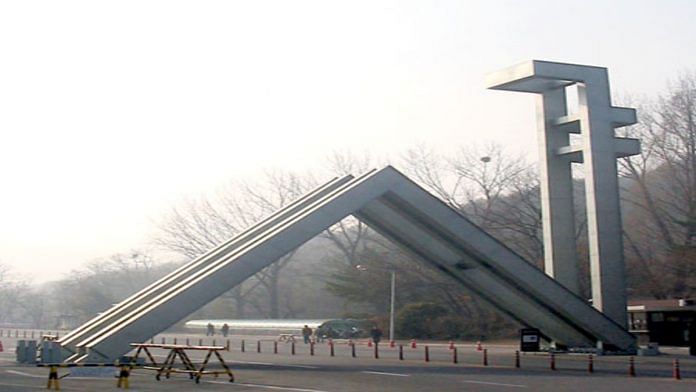New Delhi: The Korea Superconducting Tokamak Advanced Research (KSTAR) — a nuclear fusion reactor developed by researchers at the Seoul National University (SNU) in South Korea — has attained temperatures over 100 million degrees Celsius in a reaction that lasted for about 30 seconds.
This development not only sets a new world record but also brings the world closer to the realisation and use of nuclear fusion energy.
The study was published in Nature on 7 September. Although the paper claims that the researchers only experienced temperatures of 100 million degrees Celsius for 20 seconds, the study’s author, Yong-Su Na of Seoul National University, later told New Scientist that they had actually experienced the reaction for 30 seconds.
Nuclear fusion involves joining two atomic nuclei to produce a single bigger nucleus under extreme heat and pressure. This merger produces a single nucleus that’s heavy but is still lighter than the combined weight of the two individual nuclei before they fused together. The remaining mass is then transformed into energy.
The findings are striking because although scientists have managed to reach temperature levels before, this is the longest they have been able to sustain it. This suggests the possibility of unlimited clean energy.
Also Read: Success of India’s indigenous nuclear reactor at Kakrapar seen boosting clean energy goal
How it was achieved
In 2018, South Korean scientists reached a temperature level of 100 million degrees Celsius for the first time. In 2019, they advanced to holding that temperature steady for 8 seconds, and the year after, they advanced to holding the same temperature conditions stable for 20 seconds.
The main challenge was to keep the plasma — a hot, ionised state of matter created within the device — controlled. Any instabilities in the plasma could cause it to touch the walls of the reactor, cooling rapidly, dissipating the reaction, and even causing damage to the chamber it is contained in.
Yong-Su Na’s team used a modified version of the ITB technique (internal transport barrier) on the KSTAR device — also known as the Korean artificial sun — to create high pressure close to the centre of the plasma.
The plasma’s density was greatly reduced as a result. This increased temperatures at the centre of the design and decreased temperatures around the periphery, which might assist prolong the lifespan of the reactor’s internal parts.
The low-density plasma allowed the charged atoms inside to move more swiftly at the plasma’s centre and produce a higher level of stability.
Na, the author of the study, says that low density and that fast-ion-regulated enhancement (FIRE) — meaning more energetic ions at the core of the plasma — were vital in keeping it intact. But the team admits that they still do not have a clear picture of all the mechanisms involved.
The reaction was stopped after 30 seconds only because of limitations with hardware, and longer periods should be possible in the future, the New Scientist says.
KSTAR has now shut down for upgrades, with carbon components on the wall of the reactor being replaced with tungsten, which Na says will improve the reproducibility of experiments.
KSTAR’s final goal for 2025 is to achieve a continuous operation of 300 seconds, at a temperature higher than 100 million degrees.
(Edited by Uttara Ramaswamy)
Also Read: India sees 97% rise in open access solar installations in first half of 2022






